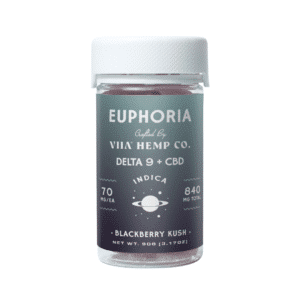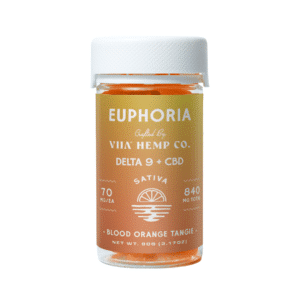Indica vs. Sativa – What’s the Difference?
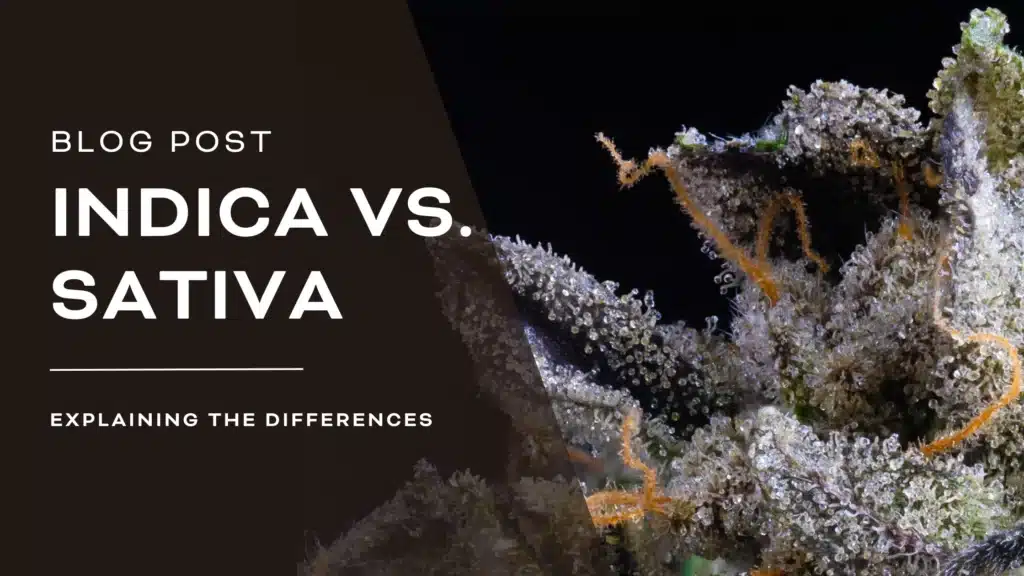
Table of Contents
To put it simply, the terms Indica and Sativa are two primary classifications within the cannabis plant genus. These distinctions not only characterize the physical features and the geographical origins of cannabis strains, but some argue that they may also offer unique physiological effects.
Just like different genres of music can evoke distinct emotions and cater to different moods, some cannabis experts insist that Indica and Sativa represent divergent facets of the cannabis plant.
Indica vs. Sativa – Overview
- Indica and Sativa are two primary classifications within the cannabis plant genus. Typically, Indica strains are known for relaxation and sedation, while Sativa strains are associated with energizing and uplifting effects.
- With more of an understanding of cannabinoids and terpene profiles, we know that the terms Indica and Sativa primarily refer to the plant’s physical characteristics and structure rather than the specific effects it produces.
- The effects of cannabis products are influenced by the concentration and presence of different cannabinoids, such as THC and CBD, and minor cannabinoids, like CBG, CBN, and CBC.
- Terpenes, aromatic compounds found in cannabis, also play a significant role in shaping the effects of strains by interacting with cannabinoids and contributing to the overall experience through scent, flavor, and potential effects.
The Basics
The terms “Indica” and “Sativa” originated from the field of botany and were initially used to classify different varieties of cannabis plants based on their physical characteristics and geographical origins.
Cannabis indica comes from the Hindu Kush mountain range. These cannabis plants were characterized by their shorter stature, broad leaves, and ability to thrive in harsh colder climates.
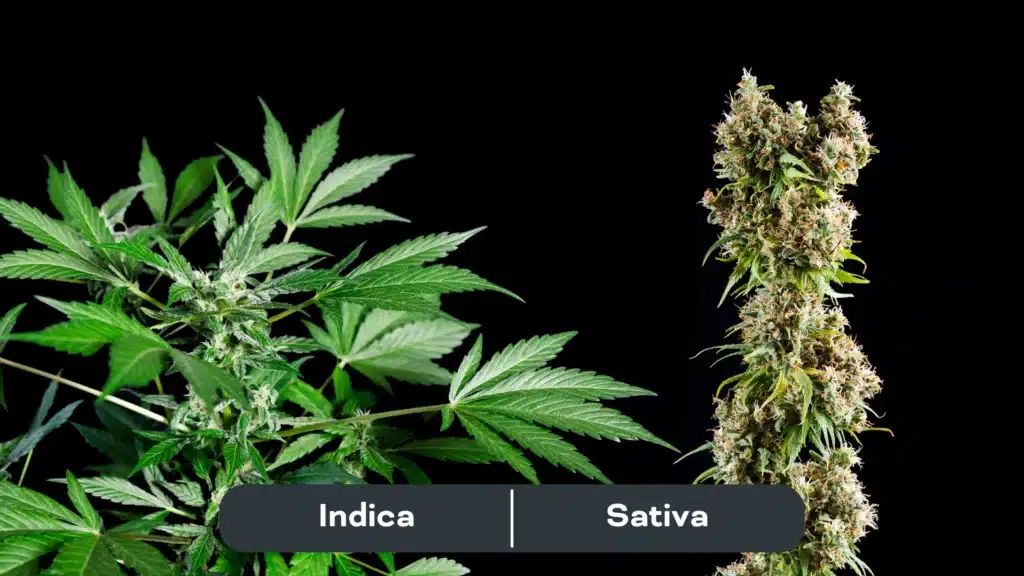
In terms of effect profiles, Indica-dominant cannabis strains are synonymous with an intense body high that’s heavy and often sedating.
On the other side, we have Cannabis sativa plants, which describe the taller, slender cannabis plants found primarily in Mexico, Colombia, and Thailand, where they adapted to warmer climates.
Sativa strains tend to have more uplifting and energetic effects that pair well with social gatherings and physical activities.
And because we’re diving in deep here, we thought we’d mention the term “cannabis ruderalis,” a subspecies within the cannabis plant genus whose origin can be traced back to Central and Eastern Europe, where it thrives in cooler climates.
This cannabis strain is known to be smaller and thin, has very space branches, and is known to produce the lowest THC concentrations [1].
Award-Winning Indica & Sativa Gummies
-
Sale Product on saleEuphoria Hybrid Gummies – 50mg Delta 9 THC + HHC$40.00Rated 4.74 out of 5 based on 99 customer ratings
-
Sale Product on saleEuphoria Indica Gummies – 50mg Delta 9 THC + HHC$40.00Rated 4.86 out of 5 based on 145 customer ratings
-
Sale Product on saleEuphoria Sativa Gummies – 50mg Delta 9 THC + HHC$40.00Rated 4.84 out of 5 based on 122 customer ratings
Where Do Hybrid Strains Come From?
Hybrid strains come from interbreeding different cannabis plants to achieve desired characteristics.
The hybridization process is often long and iterative, involving multiple generations of plants and careful selection based on desired traits. Breeders may aim to create hybrids that provide a harmonious blend of both mental stimulation and physical relaxation, appealing to a broader range of consumers.
The Controversy: Debunking The Indica vs. Sativa Classifications In Predicting Effect Profiles
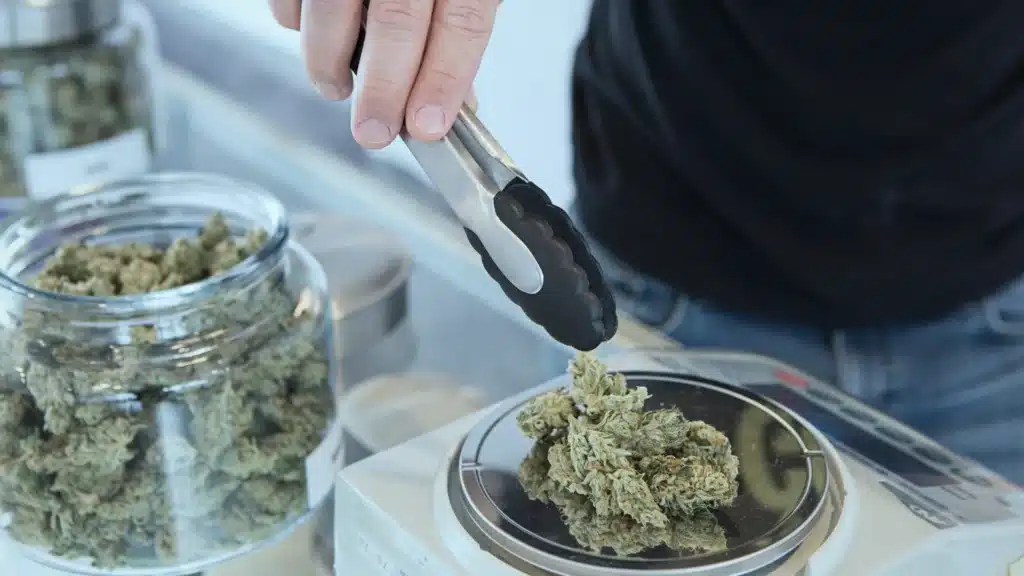
Despite bud-tenders and cannabis experts using the Indica, Sativa, and hybrid strains system for years, a growing movement challenges the validity of this classification system, as the argument is that this system lacks the foundation in data and scientific research.
As not all Cannabis indica strains will make you feel sleepy, and conversely, not all Cannabis sativa dominant strains are going to give you that energized buzz.
Research indicates that predicting the effects of specific cannabis products is far more complex due to the varying concentrations of cannabinoids and terpene profiles. Despite the emerging research on the chemical compounds found in cannabis, the industry still clings to these terms because they’re simple.
By presenting consumers with three options—high energy, low energy, and somewhere in between—it’s much easier for retailers and marketers to explain to users what they may expect from a product.
This has always been a practical shorthand system, which has seemingly allowed consumers to navigate various strains and make informed choices without diving into complex scientific intricacies.
Cannabinoid and Terpene Profiles: The True Indicator Of Effects
When it comes to determining the effects of cannabis plants, it’s not just about where the plant comes from but the remarkable compounds it contains.
Two key players in this entourage are cannabinoids and terpenes.
Cannabinoids, such as THC (tetrahydrocannabinol) and CBD (cannabidiol), are chemical compounds found in cannabis that interact with our body’s endocannabinoid system, influencing various physiological processes.
THC is infamous for its psychoactive properties, while CBD is known for its potential therapeutic benefits without the intoxicating effects—but there are over a hundred different cannabinoids found in cannabis.
The concentrations and presence of different cannabinoids can significantly impact how they make us feel — opening up a world of possibilities and complexities. Some lesser-known cannabinoids like CBG, CBC, and THCV have started to gain attention for their unique properties and potential health benefits [2].
But cannabinoids aren’t the only influencers here.
Enter terpenes, the aromatic compounds responsible for the diverse smells and flavors of different cannabis strains.
These fragrant molecules are found in a variety of plants, not just cannabis. Terpenes, such as myrcene, limonene, and pinene, contribute to the unique characteristics of each strain and work alongside other cannabinoids to shape the overall effects [3].
The presence and concentrations of these various cannabinoids and terpenes, along with their interactions with each other, create what is known as the “entourage effect.”
This concept suggests that cannabis compounds work synergistically, enhancing or modulating each other’s effects. The intricate balance of cannabinoids and terpenes in a particular strain can influence its overall effect on our bodies and minds [4].
What Matters Most For Producing Psychoactive Effects?
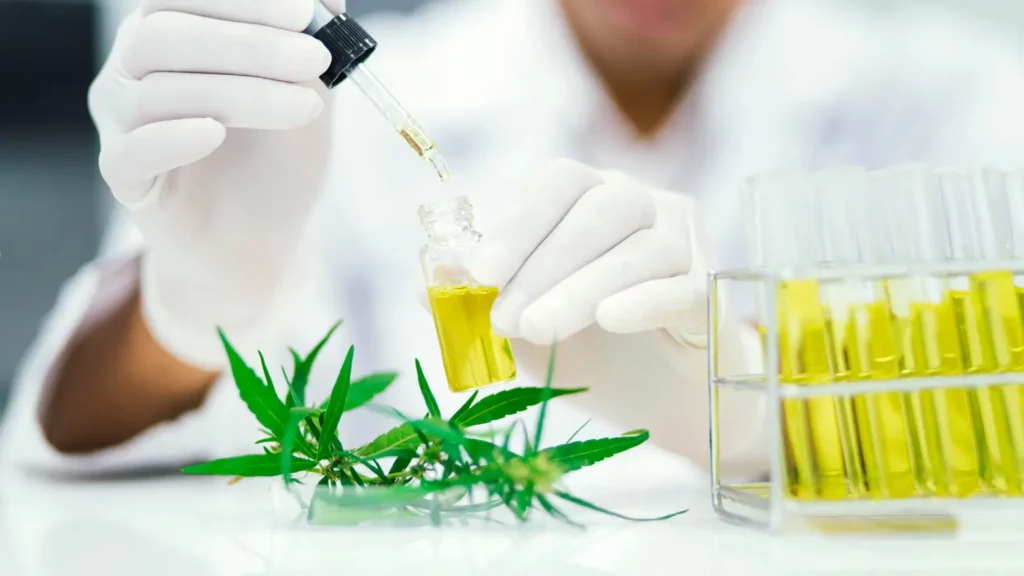
When it comes to experiencing psychoactive effects in cannabis, the primary factor to consider is the concentration of THC (tetrahydrocannabinol).
The THC concentration in a cannabis strain is crucial to its psychoactive potential. Strains with higher THC levels tend to induce stronger and more pronounced psychoactive effects. These effects can include euphoria, relaxation, altered perception of time, heightened sensory perception, and overall well-being.
Considering THC’s significant role in cannabis effects, it’s no surprise that it’s the main psychoactive cannabinoid in various cannabis products, including Delta 9 THC gummies. These are edible products that offer a discreet and convenient way to consume cannabis. At VIIA, we create our THC gummies with hemp-derived THC to remain federally compliant with the 2018 Farm Bill while still delivering a classic potent experience.
Hemp vs Marijuana for THC
The labels “hemp” and “marijuana” are terms commonly used to differentiate between different varieties or cultivars of the cannabis plant based on their chemical composition and legal status in the cannabis industry.
Hemp refers to cannabis plants that contain very low levels of Delta 9 THC, typically below 0.3% in the United States and 0.2% in the European Union.
Hemp plants are cultivated for various industrial purposes, such as fiber, seeds, and oils. They’re known for their high CBD content and other non-intoxicating cannabinoids. Hemp-derived products, including CBD extracts, are legal in many countries, including the United States, as long as the THC content remains under the 0.3% threshold.
On the other hand, marijuana is a term used to describe cannabis plants that have higher levels of THC, resulting in psychoactive effects when consumed. These strains are cultivated for their recreational effects or for medical marijuana programs, depending on the legal framework in a particular jurisdiction.
Marijuana is still regulated and classified as a controlled substance in many parts of the world, although attitudes and legislation are evolving in various regions.
Summary: Cannabis Indica vs. Sativa Plants
As research progresses, we’re gradually unraveling the complex relationships between cannabis plants and their potential impact on our well-being.
And it’s much more complex than choosing between Indica and Sativa strains.
So, the next time you encounter a cannabis product, remember that there’s a lot more than meets the eye. The concentrations and presence of different cannabinoids hold the key to unlocking a vast array of potential effects, catering to individuals’ diverse needs and preferences.
With ongoing research and exploration, we continue to broaden our understanding of how these cannabinoids work together and the profound impact they can have on how we feel.
Frequently Asked Questions About Indica vs. Sativa
Resources:
- Beutler, J. A., & Marderosian, A. H. (1978). Chemotaxonomy of Cannabis I. Crossbreeding between Cannabis sativa and C. ruderalis, with analysis of cannabinoid content. Economic botany, 32(4), 387-394.
- Amar, M. B. (2006). Cannabinoids in medicine: A review of their therapeutic potential. Journal of ethnopharmacology, 105(1-2), 1-25.
- LaVigne, J. E., Hecksel, R., Keresztes, A., & Streicher, J. M. (2021). Cannabis sativa terpenes are cannabimimetic and selectively enhance cannabinoid activity. Scientific Reports, 11(1), 1-15.
- Russo, E. B. (2011). Taming THC: potential cannabis synergy and phytocannabinoid‐terpenoid entourage effects. British journal of pharmacology, 163(7), 1344-1364.






